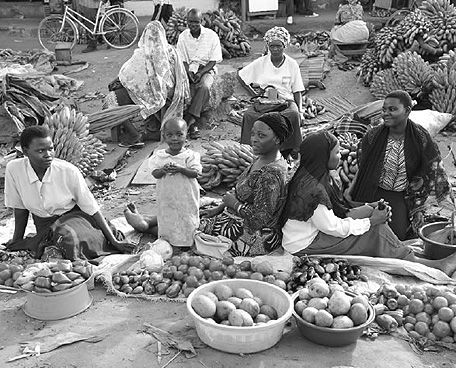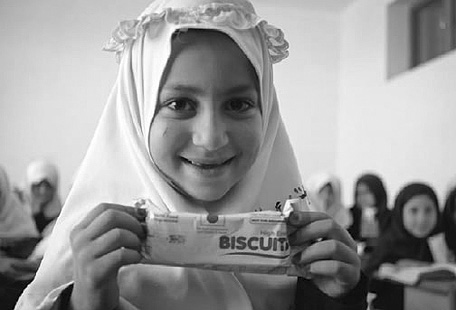Japan's Official Development Assistance White Paper 2011
(3) Food
According to the Food and Agriculture Organization of the United Nations (FAO), the number of undernourished people at the end of 2010 remained high at an estimated 925 million putting the goal of "halve, between 1990 and 2015, the proportion of people who suffer from hunger (from 20% to 10%)" by 2015, which is not on track to meet the target (16% as of 2010). The need for food aid is increasing due to conflict, natural disasters, and the rise of food prices. In addition, there is a need for international coordination and multifaceted measures to establish food security (guaranteeing the right of all people to sufficient food), such as ensuring social safety-net, improving nutrition, improving the balance of supply and demand through increasing food production, and measures against infectious diseases of livestock.
<Japan's Efforts>
Japan provides food aid in consideration of such circumstances. In FY2010, Japan provided a total of ¥12.2 billion in bilateral food aid to 19 countries. In terms of multilateral food assistance, Japan provided through the UN World Food Program (WFP), for emergency food aid, support for school meals programs that promote school enrollment and regular attendance, providing food to promote participation in work for development of agricultural land and social infrastructure to support the independence of the local community. In 2010, Japan contributed a total of $214.41 million to WFP projects being implemented around the world.
Japan also supports the efforts of developing countries to enhance their own food safety. Japan reinforces countermeasures for animal infectious diseases in the Asia-Pacific region that expand beyond national borders, such as foot-and-mouth disease, including the Global Framework for Progressive Control of Transboundary Animal Diseases (GF-TADs), in cooperation with the World Organization for Animal Health (OIE) and FAO (see page 64 for details regarding Agriculture).

A woman carries fertilizer provided through Japan's Grant Assistance for Underprivileged Farmers in Bolivia, for solving food shortage problems (Photo: Insumos Bolivia)

A market in Uganda (Photo: Koji Sato/JICA)
[Zambia]
"Food Crop Diversification Support Project for Enhancement of Food Security (FoDiS)"
Technical Cooperation Project (October 2006 - October 2011)
The staple food of the people of Zambia is maize (corn), an important crop grown by over 80% of the nation's farmers. However, the majority of them are small-scale farmers who cultivate maize dependent on rainfall, thus the country suffers a nationwide food crisis every several years when a drought occurs. To relieve the impact of a drought and other climate changes, Japan is promoting support for the diversifying food crop cultivation, not depending on maize. This project has contributed to food security in Zambia by distributing materials for planting drought resistance tuber crops like cassava and sweet potatoes, and the seeds of upland rice named NERICA (New Rice for Africa) -which Japan is promoting for its dispersal in Africa- to small-scale farmers, and supporting their cultivation. In addition, Japan has provided assistance to improve the abilities of research institutes that carry out the propagation of seeds and selective breeding of plants create a mechanism for distribution of major crops other than maize in domestic markets, as well as support for processing technology.

A farmer holds harvested cassava. Cassava is a valuable substitute for maize. (Photo: JICA)
[Afghanistan]
"School Feeding in Afghanistan: Project to Provide the Opportunity to Learn for Girls"
Contribution to WFP (January 2011 - October 2011)
Japan is partnering with WFP to implement school feeding activities in Afghanistan, which continue to be unstable due to many years of domestic conflicts and natural disasters, etc. School feeding not only improves nutrition for children, but has a wide range of impact, including relieving their hunger and making children able to focus on their studies, and providing the opportunity to attend school for the children who could not attend school due to their poverty. The enrollment ratio is especially low for girls in Afghanistan. Providing those girls with school feeding and take-out foods to bring home deepens the understanding and cooperation of their families toward their school attendance. Japan is working to narrow the educational gap between girls and boys. In 2011, WFP's school feeding activities are implemented for approximately 2 million children who attend public schools; the assistance has been significantly worth conducting.

A child holds a high-nutrient biscuit provided as part of lunch at an elementary school in Afghanistan's Herat Province. WFP distributed the biscuits provided by Japan. (Photo: WFP/Teresa Ha)
